10 Things You Can Learn From Home During Covid Season
10 things you can learn from home during Covid Season to Make Staying at Home as fun if not more fun than going out

Photo by Sincerely Media on Unsplash
Most of us stay home a lot during Covid season. While some people find themselves idly watching the time pass them by, I’m a firm believer of engaging in hobbies, possibly earning money from it but largely to make myself feel better and enjoy life even when stuck indoors.
I've listed 10 things that I learned which I know you can learn too at the comfort and safety of your home!
Here’s a list of 10 things you can learn while staying home:
1. Take an Online Course
2. Learn a New Language
3. Knit/ Crochet
4. Cook
5. Play an Instrument
6. Calligraphy
7. Learn a Martial Art
8. Draw
9. Sew
10. Write Poetry, Fiction, and Copy
1. Take an Online Course
Did you know that it’s so easy to earn a degree online these days? All you need is to enroll in platforms like Coursera, Udemy, or Masterclass and you can get yourself a certification or even a degree. Depending on what you learn, things may or may not be available through the platforms I mentioned.
But from one nerd to another, here’s a short breakdown of what to expect from them. You want to go to Coursera if you want to learn something more academic. I am referring to topics that are theoretical and more knowledge based that you would take in a university like Ancient Philosophy, Game Theory or Genetics and Society.

I say this because the courses in Coursera are provided by well-established educational institutions all over the world. Not only does this make them more credible, it’s easier to trust them with their stringent screening of educators and programs to bring forward something of value academically. Not to mention, one can earn a degree from Coursera. Want to earn a Master’s degree completely online? Coursera can help you with that.

Meanwhile, if what you wish to learn is more practical and something you’d like to use for work like programming, web design, or copywriting, I would go for Udemy. There are thousands of courses offered there and they’re very affordable. If it’s skill you’re after and the degree doesn’t really matter, look no further. Just don’t forget to look at the course outline and reviews, those should lead you to the course you need.

Lastly, I would go to Masterclass if I wanted to improve my craft; and by craft, I mean something more art related like cooking, singing, or painting. I say this because unlike Udemy and Coursera where you learn from coaches and instructors, here you learn from the experts in the field. These are renowned chefs, millionaire producers, and even Olympic athletes. Whereas in the former platforms you expect to get technical skill, here you expect to receive more in depth training, things you only learn from experience. I wouldn’t go so far as to say they’re not technical, but I say what they highlight are less the technical skills and more the techniques, tips and tricks, and advice.
2. Learn a New Language
When stuck at home, you can choose to learn a new language. One of the more in demand skills in the work place and when travelling is one’s ability to communicate in different languages. This not only allows you to communicate with more people, it also makes you more culturally aware and accepting of diversity, both of which are valuable traits in dealing with international commerce.
Learning a language when there’s a barrage of information about them online is easier than ever. You can choose among traditional and non-traditional forms of language learning. Personally, I found that repetitive exposure to language which what Duolingo offers, helps a lot on top of diligent practice.
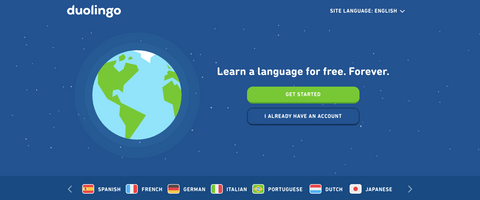
Still, some might find learning a language more challenging than learning other skills mentioned below because language involves a lot of memorization and practical application. Sadly, one element that self learning a language can lack is practical application.
While textbooks are informative, they can only do so much. Not having people who use the language to talk to can make your use of the language stiff and too formal. While there is nothing wrong with this as it can serve the purpose of basic information exchange, it can lead to some misunderstandings due to language’s ever evolving nature. That’s why we think it’s best to learn a language with a person who uses it. That way not only will you have a lot of opportunity to practice, you’ll also get someone to guide you in using the language the way it used in every day conversation.

Some options you can explore when learning language from home is taking online language classes or hiring an online language tutor who can focus on your learning process. This can be very helpful especially for intermediate to advanced speakers whose progress have less to do with memorization and need more practical usage and consistency to improve proficiency. It's also a great way to set the foundation for beginners who need guidance with phonetics and grammar rules.
3. Knit/ Crochet
Take it from someone who learned how to knit and crochet from reading books as a kid, learning how to knit/ crochet can be done from home. I used to go to my high school library to borrow books about knitting because all you need are instructions and then you can pretty much figure everything else on your own. On the plus side, there are thousands of resources online like blogs and youtube videos that can teach you everything from how to knit and purl to how to make a sweater. I managed to make sweaters by watching videos from the internet. You can too!
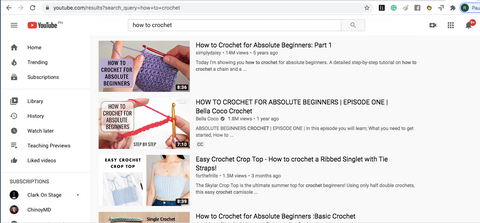
But just to be clear, knitting and crochet are different. Knitting uses two nail-like needles whereas crochet only uses one and its needle has a small hook at the tip. Both of them make use of yarn while the finished products vary quite a bit.
 crochet needle
crochet needle  knitting needles
knitting needles
Photo by Derya from Flickr
The reason I’m including knitting and crochet here is because both activities allow you to focus, and in doing so, bring you to this meditative-like state which many knitters describe as calming. Personally, I like to knit to help me in anxious moments because being able to stitch yarn up into something brings me incredible sense of satisfaction.
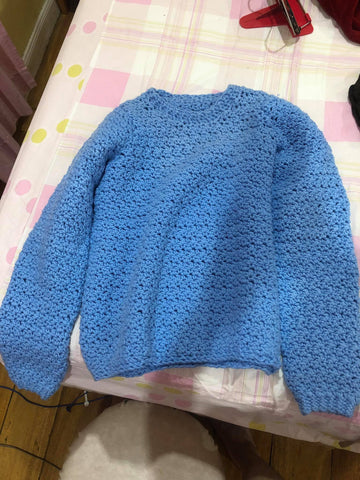 This is a sweater I made from crochet. I made my own pattern after learning the stitches watching Youtube videos.
This is a sweater I made from crochet. I made my own pattern after learning the stitches watching Youtube videos.
Aside from the mental clarity one can get from knitting or crochet, one can also craft beautiful products that can be used personally or sold online. Did you know that a lot of people sell their knit or crochet products on platforms like Etsy or Carousell? If you learn how to knit baby’s clothes, a hat, or even plushies, you can be engaging in a hobby while earning money at the same time!
4. Cook
 This is my version of Filipino Ratatouille where I layer thinly sliced vegetable underneath tomato sauce, cheese, and dried Basil.
This is my version of Filipino Ratatouille where I layer thinly sliced vegetable underneath tomato sauce, cheese, and dried Basil.
Cooking is one of the most common skills you see people engage in when you browse social media. That’s because everyone eats. Unlike other niches, food is one of those things that are universally accepted. Sure, tastes vary, but for the most part what looks delectable to one person usually looks pretty good to most people too. Given this, learning how to cook as a way to pass time while at home is a good idea because you can share an experience with everyone by sharing the food you make.
Not to mention, because everyone eats, food is also one of the easiest products to sell. The one downside is, almost everyone is getting into it and competition can be really tight when it comes to food quality.
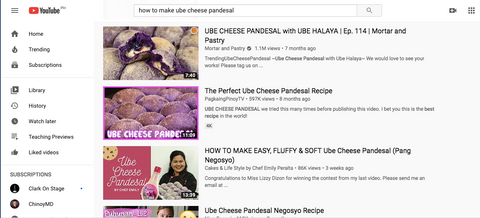
On the plus side, learning how to cook is easy because it’s one of the most talked about topics online. From recipes, cooking tutorials, to live cooking classes, your choices for reference are endless. There are so many cuisines and cooking styles available! Pick something you’d like to eat, and start there. Not only will it make cooking a lot more enjoyable since you’re looking forward to the end result, it also makes you more motivated to work and increases your likelihood of success.
5. Play an Instrument
This can be a bit tricky. Unlike cooking and knitting, playing an instrument requires you to make a bit of a heftier investment upfront because you need an instrument to get started. However, if you can spare the money, we think it’s definitely worth it!

Did you know that there are a lot of benefits to playing a musical instrument? From honing your fine motor skills to improving your chances of doing well in school, learning how to play a musical instrument is sure to bring you a slew of cognitive improvements. The very process of repetitive hand eye coordination is already developing your brain in ways other activities cannot. You’ll also be more sensitive to auditory stimuli and have an easier time multitasking since reading a piece and playing it on an instrument simultaneously provides more than adequate training for that!
And though we can't go out and receive lessons from teachers in music schools like we used to, we can avail of online music lessons through various channels and service providers during this season when everyone stays home.
6. Calligraphy
 This is a set of materials used for traditional Chinese calligraphy we have at home.
This is a set of materials used for traditional Chinese calligraphy we have at home.
If you’ve seen wonderfully written words on a paper and found them satisfying to look at, imagine how much more satisfying it would be to produce that! There are many forms of calligraphy. Personally, I grew up practicing Chinese calligraphy, but I think doing English calligraphy can be just as rewarding!
I learned how to do calligraphy from school but now you can learn how to do calligraphy now by watching youtube videos and reading blogs.
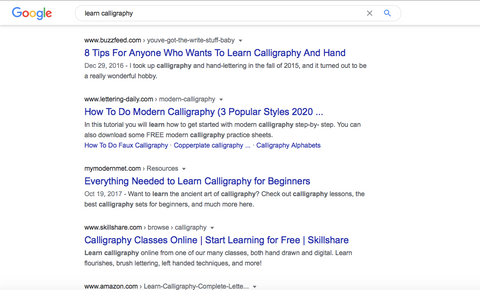
Like any art form, the process of creation involves many faculties of your brain that allow you to unleash your inner child. Engaging in these activities can boost your mood significantly and help you cope with the turmoil going on in the world.
 Calligraphy by Jin Hyeok Lee
Calligraphy by Jin Hyeok Lee
And did I mention how nice calligraphy would look on your wall? Here’s a calligraphy from a famous Korean artist I had the pleasure of receiving when I last went to Korea. Here’s another piece of Calligraphy I got done by a travelling artist when I went to China years ago.
7. Learn a Martial Art
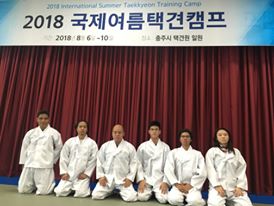 With Salvador Alacyang, John Donato, Ryan C. Gialogo, Louis Belmonte and Bryan James Gonzales.
With Salvador Alacyang, John Donato, Ryan C. Gialogo, Louis Belmonte and Bryan James Gonzales.
Quite different from the other art forms I mentioned before, but not any less exciting to practice is Martial Arts. If you think you need to be in a dojo learning from a master in person, you’re mistaken. These days, you can avail of online martials arts coaching and start learning from home. Sure, you don’t get thrown around as you would in person, but it equips you with all the basics save the sparring.
Furthermore, Martial Arts have history, culture and philosophy. This means that learning any martial art goes beyond training the physical, it also trains your emotions and cognition.
One of the primary benefits of learning martial arts is hand-eye coordination. Even for someone who has two left feet; constant repetition and diligent practice can yield amazing results. Just look at me!

Another benefit of learning martial art is the confidence it helps develop in you. When one trains their body for martial arts, they also become more acquainted with their body’s potential and capabilities, both of which will surprise you when you give yourself a chance to grow. This can help you appreciate your body more, nurturing a healthy sense of self love while also raising your confidence levels and making you less insecure about your body.
Photo by Ryan Gialogo
Not to mention, working the body and engaging in physical activity is known to benefit one’s mental health and help improve mood by increasing your endorphins in the brain.
On a side note, the difference of martial art with sports is that martial arts is a lifestyle. With its rich culture and philosophy, learning a martial art goes beyond the physical and mental benefits you gain because you’ll also be building your character through patience, respect, and clarity of thinking.
8. Draw
Do you think drawing's just for kids? Hell no! Drawing is a great way to express one's creativity, not to mention, it's a good form of communication when words could not serve you.
But besides grabbing a pen and doodling away, there are many genres in art. Choosing one and honing your skill can be a good way to stay productive when staying at home. Additionally, drawing can make hours seem like minutes as you focus on getting those angles and details right.

Personally, I discovered that I love to draw headshots. Of all materials, I prefer to use good old graphite pencils and getting messy creating shadows on my drawing paper. Here are some headshots I've drawn over the weeks.

I didn't start out like this, but learning how to draw following tips and tricks from more seasoned artists really goes a long way!
9. Learn how to Sew 
Image by Manfred Richter from Pixabay
An age-old skill and one that should never go overlooked is sewing. A lot of the items we have at home are made of fabric or fabric like materials and learning how to sew can save you a lot of money with clothing repairs.

But more than that, it can also be a great hobby for people who like to get busy with their hands! Recently, I discovered how much I liked working with synthetic leather and started sewing bags. I'm learning how to sew as I go along and certainly, it can get a little bloody sometimes if you're not careful with your needle so this may not be something young children would want to dive into just yet.
But there are some sewing alternatives young learners can start with. For starters, one can replace the needle with a plastic one like these. There are plenty of these available in commerce platforms like Shopee. 
And with these needles, you can use yarns and cords as opposed to cotton thread! Instead of sewing cloth, one can sew with EVA foam papers or even felt! Just cut out the pieces you want, punch holes in them, and sew!
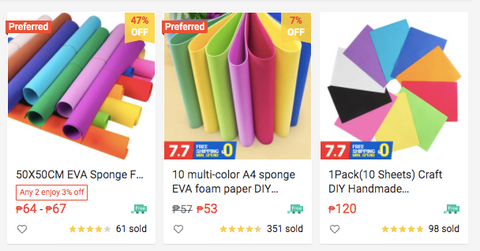
10. Write (Poetry, Fiction, or Copy)
Writing is one of the most valuable skills one can ever have. From poetry and fiction to ad and social media copy, writing is very useful!
What you're reading right now is a product of writing. The ad that made you buy that seat cooler you don't need is writing! The cover of the juice box, that's writing!
We consumer text all the time whether we're aware of it or not. you don't even have to be a reader to interact with text. That's why learning how to write can be very useful. Not only will writing be a good form of expression when you journal, it can also scale up your business or become your side gig!

Photo by Green Chameleon on Unsplash
As a child, one of my dreams was to become a writer. To do so, I've consistently practiced writing as a child in my genre of preference, short story. However, with the events lately and with my business, I found myself writing more poetry and copy. It doesn't mean I'm forgoing short stories, but it just means that there's just so many ways one can write!
And there are also so many ways one can learn how to write. From taking a degree, short course or certification, to learning on Youtube or through blogs, one can definitely get started as soon as they want to. Do you want to learn copywriting? Look up online courses in Coursera or Udemy. Check out Youtube. It's impossible to run out of sources. I think your biggest battle is choosing where to learn it and actually starting because with the amount of information out there, it's very easy to get overwhelmed and end up stuck.


Also, if you're a young writer and you need help getting started with writing, you can check out our online tutoring services for English where we help students with reading, and writing!


Like what you read? Read our other articles here!
What it's like growing up speaking 3 languagesHow to improve your reading comprehension
How to maximise your potential

Great ideas! With so many things to do, you will never get bored staying home now!